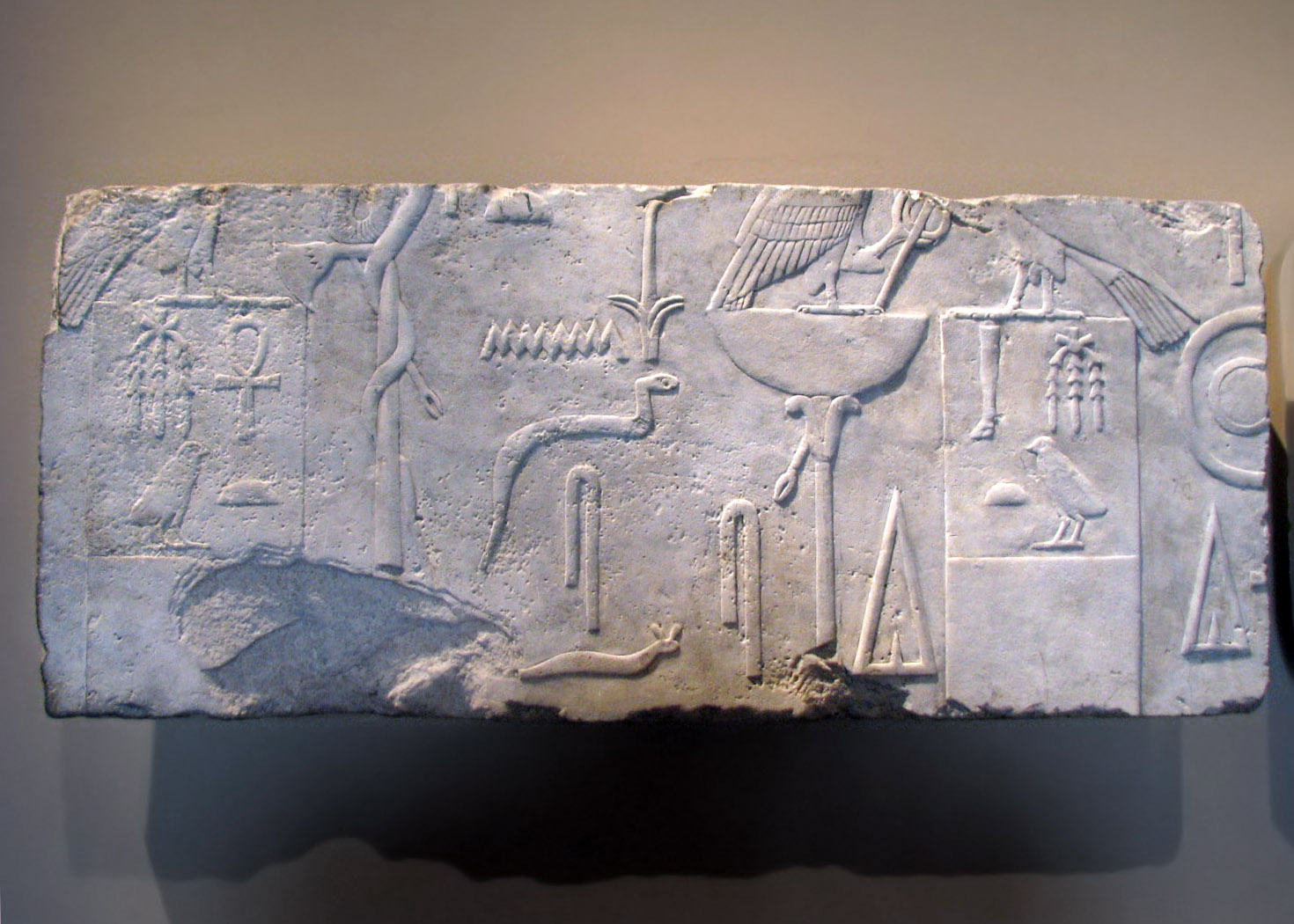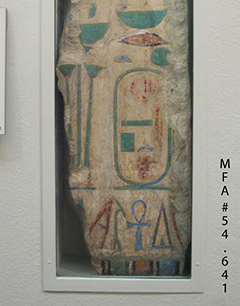
Reused Relief of Amenemhat I and Senwosret I
Dynasty 12, ca. 1991-1962 BCE
Painted Limestone, From Lisht, North Pyramid, MMA

The Names of Amenemhat I and Senwosret I
Dynasty 12, c. 1991-1962 B.C., From Lisht, North Pyramid
Amenemhat's cartouche


The Names of Amenemhat I and Senwosret I
Dynasty 12, c. 1991-1962 B.C., From Lisht, North Pyramid

Detail of a brick showing Senwosret's cartouche:
| (From info cards) "The reliefs in this gallery were discovered in the foundations of the funerary temple of Amenemhat I at Lisht. Most of them bear his name, sometimes with that of his son and co-regent, Senwosret I. Because of their protected location many of the blocks are complete, and the colors are still fresh; several sculptural styles are represented. The site and buildings from which the blocks were taken have not been identified, but possibly they all derive from an earlier funerary temple at Lisht." (The following info refers to one piece I didn't photograph) "In the scene [not photographed], Amenemhat I, identified by his cartouche, faced his son, Senwosret I. Amenemhat's crown with its two tall feathers is visible below the protective wing of a hawk or vulture, the presence of Senwosret I is indicated only by his cartouche and the expression 'the king himself.' In the scene at [page top], Amenemhat I, identified by his Horus name and the beginning of his cartouche, was on the right. Senwosret I, represented here by his Horus name and the term 'the king himself,' again faced his father. Nekhbet, the vulture goddess of Upper Egypt, and Wadjet,the uraeus serpent goddess of Lower Egypt, perched on their respective plants, extend shen signs, signifying universal domination, to hawks surmounting the kings' names." In the brick of the top of this page, Wadjet is there extending the 'shen' sign. However, not to argue with the Met's writer, but that's not a papyrus plant, that's a Was scepter around which the uraeus serpent is coiled: |

But in the two smaller bricks which we see here below that piece, Wadjet is supporting herself on a stylized papyrus plant. See Fragment of Lintel Block of Amenemhat I at MFA |


